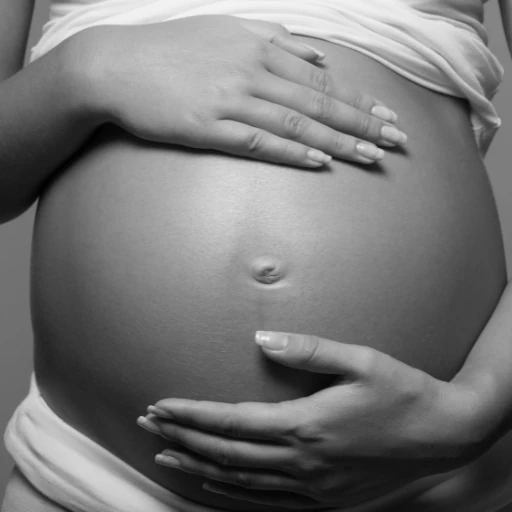As expectant mothers progress through their pregnancies, they often seek various methods to alleviate discomfort and maintain optimal health. Pregnancy massage is one such technique that has gained popularity over the years. This article delves into the safety and benefits of pregnancy massage during all trimesters, as well as discussing expert recommendations and precautions.
What is Pregnancy Massage?
Pregnancy massage, also known as prenatal massage, is a specialised form of massage therapy tailored to meet the unique needs of pregnant women. It focuses on addressing the physical and emotional changes experienced during pregnancy, providing relief from pain, stress, and anxiety.
Types of Pregnancy Massage
There are several types of pregnancy massage, including:
- Swedish Massage: This gentle massage technique uses long, gliding strokes to promote relaxation, improve circulation, and reduce muscle tension.
- Deep Tissue Massage: Focusing on the deeper layers of muscles and connective tissues, this massage aims to release chronic tension and pain.
- Trigger Point Therapy: This therapy targets specific points in muscles that cause pain and discomfort, helping to release tightness and improve overall wellbeing.
- Lymphatic Drainage: This gentle massage stimulates the lymphatic system, helping to reduce swelling and improve immune function.
Benefits of Pregnancy Massage
Pregnancy massage offers numerous benefits for expectant mothers, including:
- Reduced back and joint pain
- Improved circulation
- Reduced edema (swelling)
- Decreased muscle tension
- Reduced stress and anxiety
- Improved sleep quality
- Enhanced emotional wellbeing
Safety of Pregnancy Massage During Each Trimester
First Trimester
Some experts recommend waiting until the second trimester due to the increased risk of miscarriage during the early stages of pregnancy.
Second Trimester
In the second trimester, pregnancy massage is widely considered safe and beneficial. The risk of miscarriage decreases significantly, and the expectant mother’s body has adjusted to the pregnancy. It is essential to work with a qualified therapist who understands the specific needs and precautions associated with prenatal massage.
Third Trimester
As with the second trimester, pregnancy massage is generally considered safe during the third trimester. However, as the expectant mother’s body undergoes significant changes in preparation for childbirth, it is crucial to be mindful of positioning and pressure adjustments. A qualified prenatal massage therapist will be knowledgeable in these areas, ensuring a safe and comfortable experience.
Expert Recommendations and Precautions
Selecting a Qualified Therapist
To ensure a safe and beneficial pregnancy massage experience, it is essential to work with a therapist who has specific training in prenatal massage. Qualified therapists will understand the unique needs of pregnant women, including appropriate positioning, pressure adjustments, and potential contraindications.
Contraindications
While pregnancy massage is generally safe, there are certain conditions and circumstances where it may not be appropriate, including:
- High-risk pregnancy
- Preeclampsia
- Previous preterm labour
- Placenta previa
- Deep vein thrombosis
It is essential to consult with your healthcare provider before beginning a pregnancy massage regimen, particularly if you have any of the conditions listed above.
Positioning During Pregnancy Massage
Proper positioning is vital for a safe and comfortable pregnancy massage. In the second and third trimesters, lying flat on the back is not recommended due to potential pressure on the vena cava, which can restrict blood flow to the fetus. Instead, side-lying or semi-reclined positions are recommended to ensure optimal comfort and safety for both the mother and baby.
Pressure Adjustments
A qualified prenatal massage therapist will be skilled in applying the appropriate pressure during a pregnancy massage. They will take into account the expectant mother’s comfort level and any specific areas of concern or sensitivity. Pregnant women should always communicate with their therapist about their comfort and any adjustments needed during the massage.
Massage Frequency
The frequency of pregnancy massage sessions can vary depending on the individual’s needs and preferences. Some expectant mothers may find relief from weekly sessions, while others may prefer bi-weekly or monthly appointments. It is essential to listen to your body and discuss your needs with your therapist to determine the most appropriate frequency for your pregnancy massage sessions.
Conclusion
In conclusion, pregnancy massage is generally considered safe during all trimesters when performed by a qualified therapist who understands the unique needs and precautions associated with prenatal massage. It offers numerous benefits for expectant mothers, such as reduced pain and stress, improved circulation, and enhanced emotional wellbeing. However, it is crucial to consult with your healthcare provider before beginning a pregnancy massage regimen, particularly if you have any contraindications or concerns. By working with a skilled therapist and following expert recommendations, you can enjoy a safe and beneficial pregnancy massage experience throughout your pregnancy journey.






